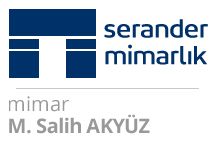Günün Mesajları
♪
Kültür bakanlığı sınavında. Ankara thm koro şefi kızını aldı. Urfa korusu şefi kayın biraderini aldı. İstanbul korosu şefi oğlu ve yeğenini aldı. ilginizi çekerse detay verebilirim
ttnet arena - 09.07.2024
♪
Cumhuriyetimizin kurucusu ulu önder Gazi Mustafa Kemal Atatürk ve silah arkadaşlarını saygı ve minnetle anarken, ülkemiz Türkiye Cumhuriyeti’nin kuruluşunun 100. yılını en coşkun ifadelerle kutluyoruz.
Mavi Nota - 28.10.2023
♪
Anadolu Güzel Sanatlar Liseleri Müzik Bölümlerinin Eğitim Programları Sorunları
Gülşah Sargın Kaptaş - 28.10.2023
♪
GEÇMİŞ OLSUN TÜRKİYE!
Mavi Nota - 07.02.2023
♪
30 yıl sonra karşılaşmak çok güzel Kurtuluş, teveccüh etmişsin çok teşekkür ederim. Nerelerdesin? Bilgi verirsen sevinirim, selamlar, sevgiler.
M.Semih Baylan - 08.01.2023
♪
Değerli Müfit hocama en içten sevgi saygılarımı iletin lütfen .Üniversite yıllarımda özel radyo yayıncılığı yaptım.1994 yılında derginin bu daldaki ödülüne layık görülmüştüm evde yıllar sonra plaketi buldum hadi bir internetten arayayım dediğimde ikinci büyük şoku yaşadım 1994 de verdiği ödülü değerli hocam arşivinde fotoğraf larımız ile yayınlamaya devam ediyor.ne büyük bir emek emeği geçen herkese en derin saygılarımı sunarım.Ne olur hocamın ellerinden benim için öpün.
Kurtuluş Çelebi - 07.01.2023
♪
18. yılımız kutlu olsun
Mavi Nota - 24.11.2022
♪
Biliyorum Cüneyt bey, yazımda da böyle bir şey demedim zaten.
editör - 20.11.2022
♪
sayın müfit bey bilgilerinizi kontrol edi 6440 sayılı cso kurulrş kanununda 4 b diye bir tanım yoktur
CÜNEYT BALKIZ - 15.11.2022
♪
Sayın Cüneyt Balkız, yazımda öncelikle bütün 4B’li sanatçıların kadroya alınmaları hususunu önemle belirtirken, bundan sonra orkestraları 6940 sayılı CSO kanunu kapsamında, DOB ve DT’de kendi kuruluş yasasına, diğer toplulukların da kendi yönetmeliklerine göre alımların gerçekleştirilmesi konusuna da önemle dikkat çektim!
editör - 13.11.2022
Tüm Mesajlar
Anket
Yazılar
Seen and heard international concert reviewSayı: 995 - 22.04.2010
Barcarolle, Op.60; 3 Mazurkas Op. 56; Album Leaf B 151; 2 Nocturnes Op.62; Berceuse, Op.57; 3 Mazurkas Op. 59; Piano Sonata No.3 in B Minor, Op. 58
Was tonight’s program just another all-Chopin performance aimed at giving us a sample of the composer’s oeuvre? One may very well think that - looking at the diversity of the titles, but closer inspection reveals that Ian Hobson had carefully chosen his repertoire to focus on a very particular period in Chopin’s life. In fact, had he substituted Album Leaf with the Polonaise-Fantasie, Op. 61, we would have heard a sequential run of the composer’s Opera 58 to 62. These opus numbers represent the mature Chopin in one of his most productive phases, i.e. 1843-1846. It was in that period that Frederick Chopin pushed the boundaries of his musical language exploring new territories in harmony and chromaticism. And here, this evening, Mr. Hobson delighted us with a journey through Chopin’s late style, at times a little too hurriedly, allowing us nothing more than a quick foretaste, but at others carrying us through every nook and cranny with perfect pianism.
The beautiful Barcarolle Op.60 belongs in the former category. The mysterious tone of the opening low C-Sharp receded before it had the chance to play its crucial role when Mr. Hobson launched the falling modulation phrase almost concurrently with it. As a result, the sustain from the bass note was cut short and there was no uncertainty to contrast and in turn emphasize the sheer beauty of the upcoming main theme. This, however, was not a momentary impulse but a stylistic choice. This became evident as the pianist’s hands kept rushing through the theme and in its repeats in thirds and sixths. The middle section was handled with more attention to detail and in the recapitulation where the music has become more familiar, his masculine approach made a little more sense but overall, the music could not keep up with his speed and urgency.
The relatively lesser known Op. 56 Mazurkas came next. The first one in B Major is a perfect salon piece with its festive mood and a tight tonal range. However the piece has a trick in its sleeve: the melody switches back and forth between the hands. Being one of the staples of Chopin’s developing style of the period, this attribute was skilfully realized by Mr. Hobson. In the C Major mazurka, the pianist used too much pedal triggering a mislay of rhythm and accents -the defining characteristic of this piece. Mr. Hobson’s delivery of the low-key C minor mazurka was the finest among the three; particularly his attention to alternately emphasizing the second and the third beat in the chordal section was a pleasure to listen to. The lovely miniature Album Leaf which is very seldom heard introduced us to two of Chopin’s creative pinnacles.
Mr. Hobson’s Chopin is definitely muscular. Thankfully the Op.62 nocturnes lend themselves to Florestan-ian readings much more easily than the others in this genre. When Mr. Hobson launched the arpeggio to the B Major nocturne, you could immediately get the feel that the wraithlike melodies would be forfeited in lieu of the nocturne’s furious runs and trills. This late nocturne is not driven by a main theme but instead is coerced by an elusive ‘endless melody’ overseeing the continuity and affixing all the thematic ideas in the music. That particular characteristic of the piece worked well with Ian Hobson’s hurried style which, while not elevating the music, did not deteriorate it either. He was meticulous in fulfilling the technical demands (most importantly, the trills). The second nocturne of the Op. 62 set –in contrast, is more traditional and is driven by melody. Although the main theme is not over-sentimental, it sets the tone of the piece. Mr. Hobson’s fingers raced through the bars giving us equal notes in the main and contrasting themes as they are written on paper, but the core of the music, rubato ended up being sacrificed. The middle section felt more like restlessness than agitation. As the first half ended with the E-Major nocturne, I was nervous about how the Berceuse which was the most understated piece on his evening schedule would fare with Ian Hobson’s style.
Then something like a miracle happened. When Mr. Hobson walked on the stage in his same unaffected manner and sat down at the piano to start the Chopin lullaby op.57, I was all set for a shaking – rather than rocking, of the cradle, but I was amazed to find a subdued pianist at his most lyrical and delicate. The pace was still there, but Mr. Hobson managed to pull out the silkiest sounds possible from a Yamaha Concert Grand and he did not even look as if he was trying hard. Every variation was decidedly different from the next, but the changes in left hand figure were masterly veiled by the pianist’s receptive phrasing of the modulating theme. Under Mr. Hobson’s fast tempo, the lullaby might have been suitable for a modern era child with ADHD, but it nevertheless sounded like the first class cradle song that it is.
When Ian Hobson delved into the Mazurka territory once again, this time it was for the Op. 59 set. Being another series in the mature Chopin style, the mazurkas of the Op. 59 set are again lesser known compared to those that come before and after them. Once again the pieces are quite airy, very hard to grasp. Mr. Hobson changed back to his earlier self when playing this set and the result was a little muddy and lacking aim and direction.
Next came -what I assume the celebrated pianist had been waiting for all evening, a superb, outstanding rendition of the 3rd sonata. The Allegro was simply electrifying. From the tension of the opening to the lyrical contrasting themes and the serene coda, Mr. Hobson set the perfect tone delivering a very contrapuntal reading. The thrill spilled directly into the Scherzo in which the pianist’s full technical abilities were finally put to test. His fingers glided over the full spectrum of the keyboard without any difficulties –and this while Mr. Hobson was playing at his usual fast-er tempi. During the trio he was obviously impatient to get back to the initial section and when he hastily did, he gave the movement a furious ending.
The heart and soul of this sonata, of course, is the Largo. Chopin’s harmonic progression has perhaps never been more adventurous and daring than it is here. The arpeggiated lines are truly revolutionary. It is always best to enjoy every bar, every note at the usual pace. Ian Hobson slowed down a little for the pensive sections and the arias did not sound hurried. Still I would have preferred to hear this movement a little slower.
The finale of the B-Minor sonata that I heard tonight might be one of the best performances of this movement I’ve ever heard –live OR recorded. Mr. Hobson who had –up to this point, kept his cool, unaffected stance throughout the program was obviously overwhelmed by the agitation in the music. All the fast runs, chromatic sections, powerful chords were played just at the right tone and dynamics. By the end of the coda, the crowd in the auditorium who were mostly impassive throughout the evening were on their feet.
Mr. Hobson came back on stage for an encore of two Op.10 etudes. The famous E major and the following C-Sharp etudes were, along with the Sonata, the highlights of the evening. It is always refreshing to listen to a Chopin recital ‘avec but’ –but I still could not help but wonder why Ian Hobson had not opted for a full playlist of virtuosic pieces like the last three.
http://www.musicweb-international.com
Tavsiye Et ♫
Yorumlar
Bu yazıya henüz yorum yapılmadı.
Yorumları okumak yada yorum yazmak için sisteme giriniz.


